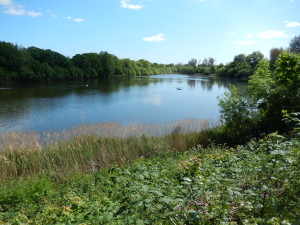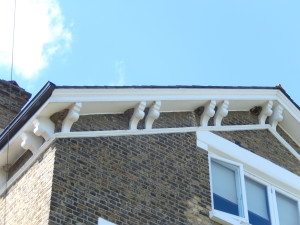After a long cold spell, it again felt like spring today, and despite the cloud I went to Wraysbury, thinking that it could be a good time for warblers.
I was greeted by a pair of Cormorants on a bleached branch beside the lake. And a moment later by the first of many Blackcaps. Warbler the first.
A little way along the path, a rapid and rich warble went on .. and on .. and on – aha! A Garden Warbler. (How to tell Garden from Blackcap? “Blackcap’s Brief.” Well, good enough for a first approximation.) Warbler the second.
I walked on a few paces, and glimpsed something small and brown in the willows. Binoculars showed an unmistakable Garden Warbler – Sylvia borin[g] – pretty much uniformly coloured, or rather, so beautifully countershaded that it looks flat in sunlight, quite the clever camouflage trick.
It started to sing – and was almost drowned out by the deafening repetitive din of a Cetti’s Warbler (roughly, Chwit-i-Pit-i-Pit! Chwit-i-Pit-i-Pit!), as usual without a glimpse of the songster. Warbler the third.
I then saw my first Banded Demoiselle, indeed my first flying damselfly or dragonfly, of the year. It’s always a lovely moment. A few bright yellow (male) Brimstone butterflies skittered about or sunbathed: perhaps the butter-coloured insect is the original “butter fly”, or perhaps the name refers to the fluttering flight of the whole group – it must make them very hard for predators like birds and dragonflies to catch them, and given how common it is to see a butterfly with holes pecked in its wings, it is easy to believe that anti-predator adaptations are highly advantageous.
Other conspicuous insects were a lot of Sawflies, looking much like tiny red wasps with black-and-yellow striped tails, and numerous large Bumblebees enjoying the purple Comfrey which is abundant beside the river.
The droning chatter of a Reed Warbler came out of another Willow beside the lake: Warbler the fourth.
From across the river, just audible but quite definite, came the Chiff-Chaff-Chiff-Chaff-Chiff-Chaff song of .. you guessed it. Warbler the fifth.
Across the bridge and onto the flat scrub, and in almost the first bush was a Whitethroat singing its short simple scratchy ditty. (Presumably female Whitethroats find it enticing. Or other males find it repellent, one or the other. Maybe both, actually.) Warbler the sixth.
I reconnoitred the wood-and-scrubby area for possible Willow Warblers (they don’t inhabit willows any more than Willow Tits do), but they don’t seem to have arrived yet. Some Song Thrushes improvised their fine, repeated melodies of many different repeated phrases.
A six-warbler walk … one of the delights of May.


